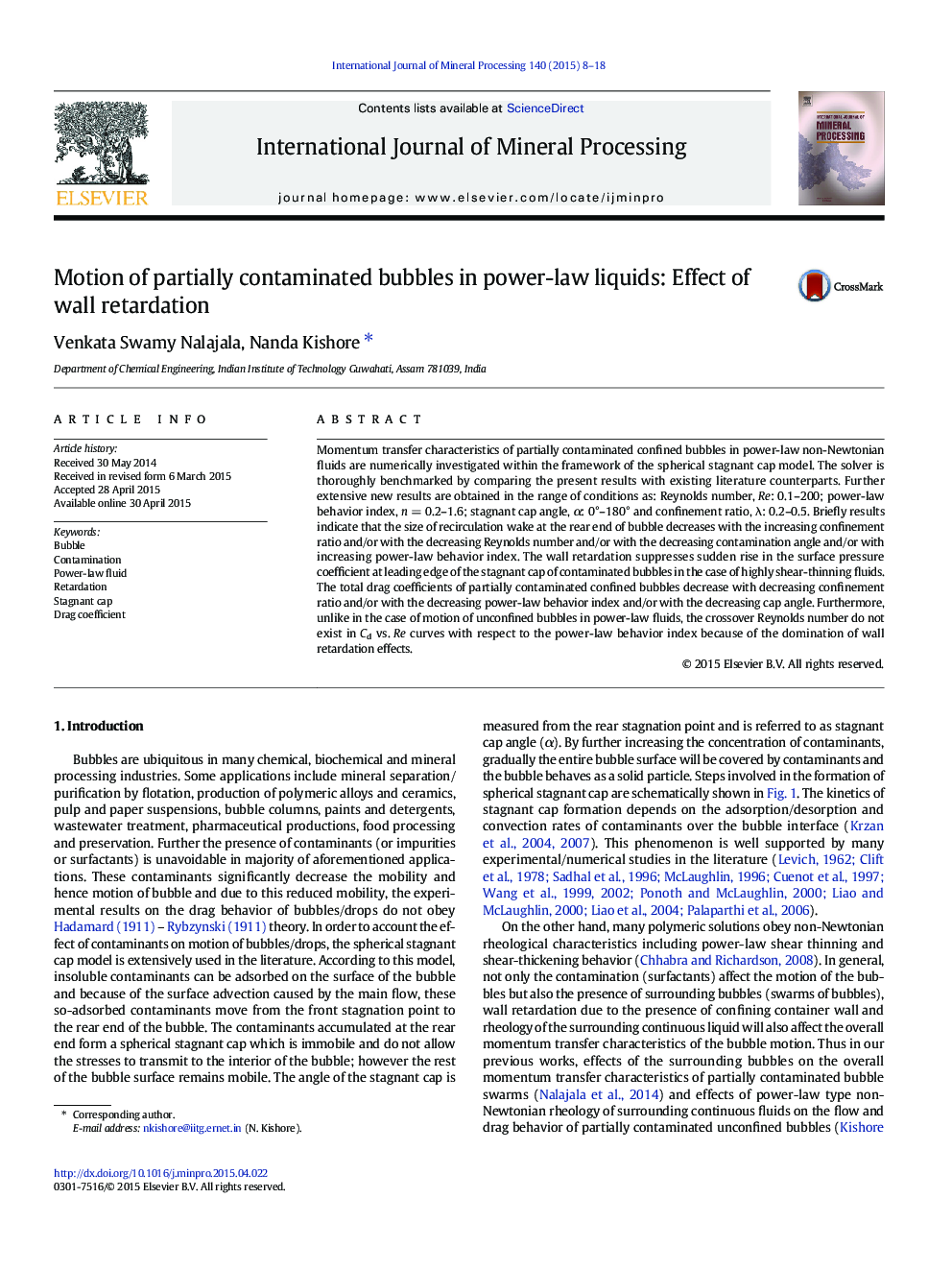| Article ID | Journal | Published Year | Pages | File Type |
|---|---|---|---|---|
| 213793 | International Journal of Mineral Processing | 2015 | 11 Pages |
•CFD simulations on motion of confined bubble in contaminated power-law liquids•Contamination effects are incorporated using spherical stagnant cap model•Recirculation increased with decreasing confinement ratio for α ≥ 60 and Re > 20•Sudden rise in surface pressure at leading edge of cap is negligible for small n•Crossover Reynolds number is not observed unlike in the case unconfined bubbles
Momentum transfer characteristics of partially contaminated confined bubbles in power-law non-Newtonian fluids are numerically investigated within the framework of the spherical stagnant cap model. The solver is thoroughly benchmarked by comparing the present results with existing literature counterparts. Further extensive new results are obtained in the range of conditions as: Reynolds number, Re: 0.1–200; power-law behavior index, n = 0.2–1.6; stagnant cap angle, α: 0°–180° and confinement ratio, λ: 0.2–0.5. Briefly results indicate that the size of recirculation wake at the rear end of bubble decreases with the increasing confinement ratio and/or with the decreasing Reynolds number and/or with the decreasing contamination angle and/or with increasing power-law behavior index. The wall retardation suppresses sudden rise in the surface pressure coefficient at leading edge of the stagnant cap of contaminated bubbles in the case of highly shear-thinning fluids. The total drag coefficients of partially contaminated confined bubbles decrease with decreasing confinement ratio and/or with the decreasing power-law behavior index and/or with the decreasing cap angle. Furthermore, unlike in the case of motion of unconfined bubbles in power-law fluids, the crossover Reynolds number do not exist in Cd vs. Re curves with respect to the power-law behavior index because of the domination of wall retardation effects.
